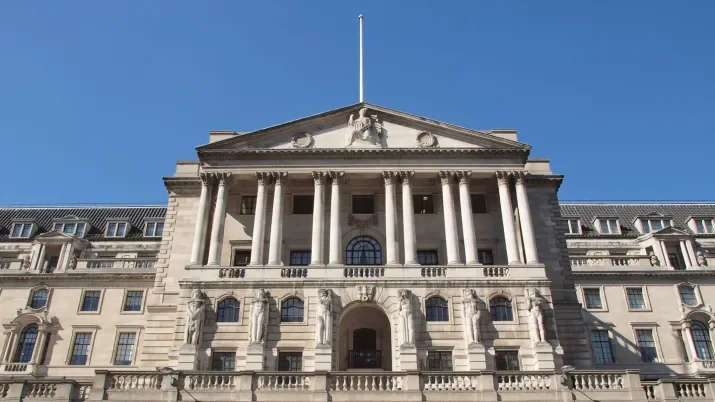European ABS: Five things to expect in 2022
If 2021 was a bad year for global bond returns, it follows there were few natural shelters to be found within fixed income from the brunt of inflation and rates-driven volatility; the Barclays Global Aggregate Index (a widely used broad measure of bond performance) returned -4.7% in USD terms, while European investment grade credit returned -1.1% despite credit spreads tightening over the course of the year.
In our annual outlook we said that in 2022 we expected to see a convergence between the state of the economic cycle, monetary policy and market expectations. We have seen this convergence starting to play out in just the first couple of weeks of the year, with volatile US Treasury yields in particular suggesting markets are still playing catch up to the Fed’s hawkish pivot late in 2021. Fundamentally, many of the drivers of underperformance we saw across broader fixed income in 2021 look set to continue in 2022. With that in mind, we think European ABS should prove a valuable allocation for fixed income investors faced with this convergence in 2022, and there are a number of key themes that we think back up this view.
Floating into a safe harbour
Steering clear of unwanted yield curve related volatility traditionally requires low interest rate duration, and floating rate bonds can give investors upside in a rising rate environment as their coupons are reset higher in line with base rate rises. European ABS currently offers the highest spreads of all the potential floating rate investments out there for comparable ratings. There are a range of AAA opportunities from Prime RMBS at 27bp through to non-bank RMBS at around 75bp and CLOs at 95bp, while at the BBB level we see non-bank RMBS at 180bp or more, CLOs at 330bp and CMBS at around 300bp. Dipping below investment grade we would look specifically at CLOs, where we currently see BB notes at around 650bp and B notes at 950bp. Turning to ABS then does not have to mean sacrificing spread despite its defensive characteristics through this part of the cycle. In our view, returns driven by carry alone in European ABS are likely to outpace almost every other part of fixed income through 2022.
A broadening opportunity set
2021 was a record year for ABS primary markets, with CLOs in particular driving total issuance in Europe to €105bn and even auto ABS surprising to the upside despite declining car sales. We see further growth in 2022 and a 20% rise in primary issuance looks feasible with mostly the same drivers in place; high demand for borrowing across consumers and corporates, ample systemic liquidity and a healthy financial system.
We think one important shift will be the re-emergence of traditional bank sponsored issuance, mainly RMBS, with treasurers finally starting to look beyond the cheap funding programmes of the ECB and the BoE. European market growth should mean greater diversification potential for investors, as well as deeper liquidity. We have seen a growing number of sponsors and issuers enter the market, as well as new niche assets like equipment leasing and inaugural commercial real estate (CRE) CLOs.
Deteriorating fundamentals – but from a high base
Huge fiscal stimulus and direct support of corporates and consumers, as well as the speed of the economic recovery, played a pivotal role in maintaining fundamental performance and default rates within European ABS pools in the wake of COVID-19. UK unemployment for example is at 4.2%, just 0.2% above pre-pandemic levels and with overall employment 1.5% higher.
We anticipate the main challenge to ABS fundamentals in 2022 will be the bite of persistent inflation eating away at disposable incomes and creating pressure on borrowers’ ability to pay. We also expect to see some further modest increases in the cost of borrowing, though in many cases this will still be low when compared with 2019. A strong banking system with ample liquidity, strong job availability and wage growth on the other hand should result in a benign landscape for arrears and defaults within ABS deals, so we are confident fundamentals will not be a concern for European ABS investors in 2022.
ESG progress, regulatory stability
European ABS issuers have made steady progress in making data available for our ESG assessments, and we expect 2022 to see the continued harmonisation of ESG reporting and loan level data. The resumption of more meaningful bank sponsored issuance will also likely herald more green and social labelled deals, given the greater focus from those businesses and deeper asset pools from which to draw suitable collateral. We saw €4.6bn of such deals in 2021 and can expect up to €12bn in 2022, according to Barclays, with social labelled deals most likely to grow given the seemingly low threshold and no observable change in issuer lending standards when obtaining one.
On the regulatory side, the UK government has also ruled out significant near-term changes in the securitisation framework post-Brexit, reducing the risk of an unhelpful divergence from the EU regime.
Abundant relative value with rates a friend not a foe
We enter 2022 with spreads having pulled back from the tights of September last year, and we see plenty of relative value across European ABS, especially versus more mainstream fixed rate markets given the obvious attraction of floating rate assets in today’s environment.
We see CLOs as not only the best standout value within European ABS but probably within fixed income ; BBB, BB and B rated CLO notes are currently yielding around 3.5%, 6.5% and 9.0%, respectively, compared with the BAML Euro HY Index at 2.8%. We also see good value in CMBS and the more granular CRE backed deals, which on a credit selective basis can offer a spread premium and yields approaching those available on CLOs.
We also think a fairly obvious but much overlooked opportunity exists in UK ABS. The BoE has hiked rates, GBP denominated ABS coupons have thus increased, and we expect more of this in 2022, a clear positive for investors since it means more income. The UK ABS market is the largest and generally most liquid within Europe, so we feel being overweight here continues to make sense. The ability to further add value through active trading exists in the greatest size here as well, in our opinion. With fundamentals normalising, we are likely to see a greater degree of tiering between deals as well as opportunities through the year to trade around credit duration if broader markets are volatile. The UK market is also considered to be less prone to a tapering-driven correction as the BoE has no ABS purchase programme.
In short, we see several reasons to be positive on European ABS in 2022, and we won’t apologise for being more bullish on monetary tightening than most fixed income investors.




